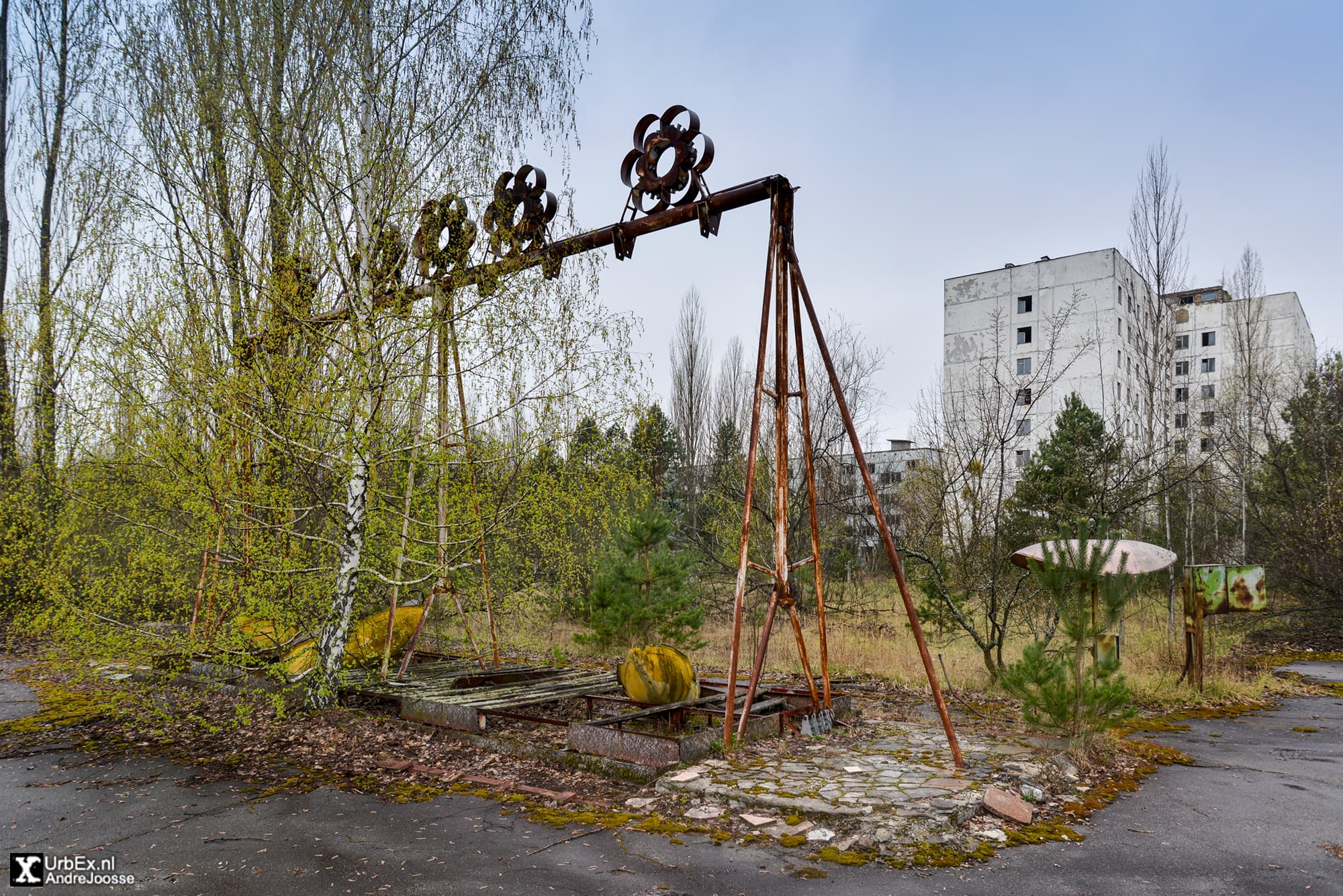In the heart of Ukraine, a city once teeming with life now stands as a haunting reminder of a nuclear disaster that changed the course of history. Pripyat, a once-thriving Soviet city, now lies in eerie silence within the vast Chernobyl Exclusion Zone. In this article, we’ll delve into the story of Pripyat, exploring the aftermath of the Chernobyl nuclear disaster and how nature is reclaiming this abandoned urban landscape. Pripyat was born in 1970, a city built to house the workers of the Chernobyl Nuclear Power Plant, which was located just a few kilometers away. The city was carefully planned, featuring modern amenities, schools, cultural centers, and even an amusement park. It quickly grew into a bustling urban center, with a population of nearly 50,000 residents by 1986.

On April 26, 1986, the world was forever changed when Reactor No. 4 of the Chernobyl Nuclear Power Plant exploded, releasing a catastrophic amount of radioactive materials into the atmosphere. Pripyat, being the closest urban center, bore the brunt of the disaster. The city was swiftly evacuated, and its residents were forced to leave behind their homes, belongings, and even their pets, with the belief that they would return shortly. Today, Pripyat remains a ghost town, frozen in time. The abandoned city is a haunting labyrinth of empty apartment buildings, overgrown streets, and silent playgrounds. The eerie atmosphere is palpable as you wander through the decaying structures, some of which still bear the marks of daily life from more than three decades ago. Dolls, schoolbooks, and personal items are strewn about, creating a poignant tableau of what life was like before the disaster.

Perhaps one of the most iconic and eerie sights in Pripyat is its abandoned amusement park. Scheduled to open on May 1, 1986, just days after the disaster, the Ferris wheel and other rides have remained motionless ever since. The rusted skeleton of the Ferris wheel stands as a chilling symbol of the abrupt end to the city’s festivities. Despite the pervasive radiation, the Chernobyl Exclusion Zone has become a unique haven for wildlife. In the absence of human activity, nature is reclaiming the land. Rare and endangered species have thrived in this unlikely sanctuary. The juxtaposition of the abandoned city and thriving ecosystems is a testament to nature’s resilience.

Today, Pripyat is open to tourists, who can explore the city with guided tours. However, access to certain areas is restricted due to elevated radiation levels. Visitors are required to follow strict safety measures and are encouraged to respect the site’s historical significance. Pripyat, Ukraine, stands as a poignant symbol of the devastating impact of the Chernobyl disaster. Its abandoned streets, derelict buildings, and the lingering presence of the past serve as a somber reminder of the consequences of nuclear accidents. Yet, it’s also a testament to the indomitable spirit of nature, which has returned to reclaim the land. Pripyat serves as a lesson in the enduring impact of human actions on the environment and the resilience of the natural world.
